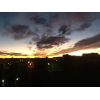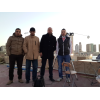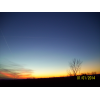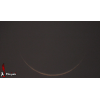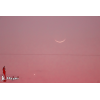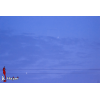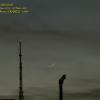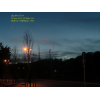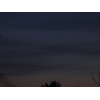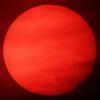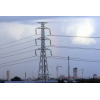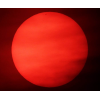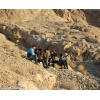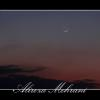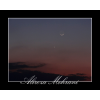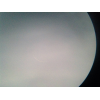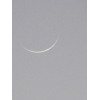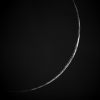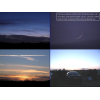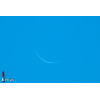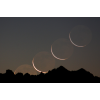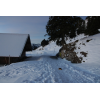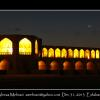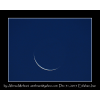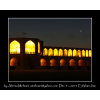Visibility of Rabee' Al-Awwal Crescent 1435 AH
On this page:-
When to Observe Rabee' Al-Awwal Waxing (NEW) Crescent ?
The geocentric conjunction (Geocentric New Moon) will occur Inshalla on (Wednesday 01 January 2014) at 11:14 UT.
Sighting the new crescent on (Wednesday 01 January 2014) and (Thursday 02 January 2014) is shown in the below graphs using the program Accurate Times by Mohammad Odeh according to Odeh criterion. Where:-
- It is impossible to see the crescent from the areas located under the red color. Because either the Moon on this day sets before the Sunset and/or the topocentric conjunction occurs after the Sunset.
- The crescent is expected to be seen by optical aid only from the areas located under the blue color.
- The crescent is expected to be seen by optical aid from the areas located under the magenta color. In these areas the crescent could be seen by naked eye if the atmospheric conditions are superb and the observer is experienced.
- The crescent is expected to be easily visible by naked eye from the areas located under the green color.
- The crescent cannot be seen from uncolored areas, even though the Moon sets in these locations after the Sunset and the topocentric conjunction occurs before the Sunset, but the Moon is not sufficiently illuminated in order to be seen as crescent even by optical aid.
- Kindly notice that the below graph shows the possibility of seeing the crescent from areas between 60 degrees north of Equator down to 60 degrees south of Equator.
Wednesday 01 January 2014
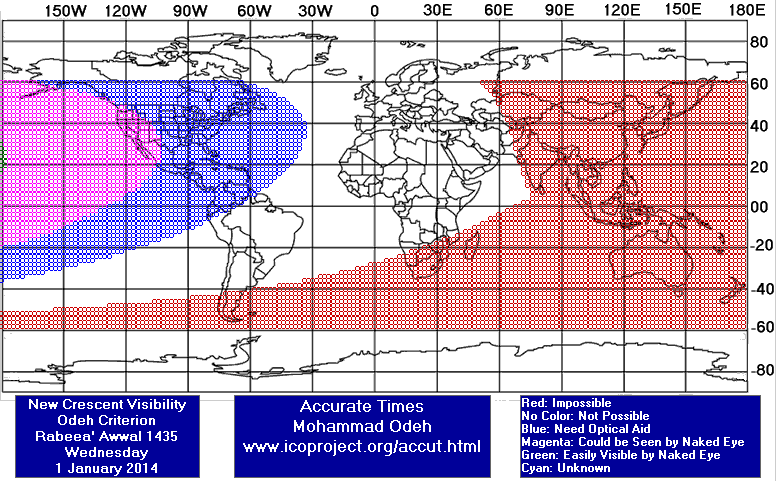 Thursday 02 January 2014
Thursday 02 January 2014
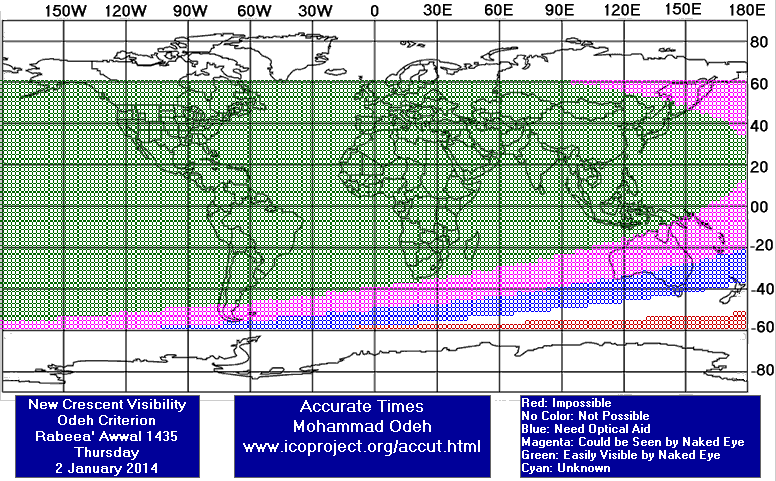
According to the Universal Hejric Calendar (UHC), which is based on the calculated crescent visibility, the start of this month in the Eastern Region will be on Friday 03 January 2014 and in the Western Region will be on Thursday 02 January 2014. Kindly notice that the UHC is a pre-calculated calendar, which adopts a certain criterion to start the new Hejric month. Your country/organization might adopt different criterion to start the new Hejric month. So it is highly advised to read the UHC website before giving any judgment.
- Results of seeing the crescent, and the first day of the month in different countries will be added here Inshalla as we receive the reports from ICOP's members. If you wish to be a member in ICOP, or to know more about it, kindly click here.
Rabee' Al-Awwal Waxing (NEW) Crescent Observation Results
Wed 01 January 2014
Algeria
1 . Time of observation:
After sunset.
Not Seen: ICOP member Dr. Abdallah Ouragh from بريان City in تغردايت State mentioned that the sky was partly cloudy, the atmospheric condition was clear, the crescent was not seen by naked eye, the crescent was not sought by binocular, the crescent was not sought by telescope, the crescent was not sought by CCD Imaging
2 . Time of observation:
After sunset.
Not Seen: ICOP member Mr. Hocine Chikh Aissa from Ghardaia City in Ghardaia State mentioned that the sky was partly cloudy, the atmospheric condition was hazy, the crescent was not seen by naked eye, the crescent was not seen by binocular, the crescent was not sought by telescope, the crescent was not sought by CCD Imaging
Libya
1 . Time of observation:
After sunset.
Not Seen: ICOP member Eng. Mohamed Mogerby from حي الأندلس City in طرابلس State mentioned that the sky was clear, the atmospheric condition was clear, the crescent was not sought by naked eye, the crescent was not seen by binocular, the crescent was not sought by telescope, the crescent was not seen by CCD Imaging
Eng. Mohamed Mogerby said: "تمت محاولة تحري الهلال طوال اليوم بواسطة المنظار وبواسطة تقنية التصوير الفلكي. ولم تتم رؤية الهلال. مع العلم بأن السماء كانت صافية."
Nigeria
1 . Time of observation:
After sunset.
Not Seen: ICOP member Mr. Qamarudeen Muhammad from Ilorin City in Kwara State State mentioned that the sky was totally cloudy, the atmospheric condition was hazy, the crescent was not seen by naked eye, the crescent was not sought by binocular, the crescent was not sought by telescope, the crescent was not sought by CCD Imaging
Mr. Qamarudeen Muhammad said: "It was cloudy and report from lagos environ indicated that it was raining at the time of sunset"
2 . Time of observation:
After sunset.
Not Seen: ICOP member Dr. Usman El-Nafaty from Bauchi City in Bauchi State mentioned that the sky was partly cloudy, the atmospheric condition was clear, the crescent was not seen by naked eye, the crescent was not sought by binocular, the crescent was not sought by telescope, the crescent was not sought by CCD Imaging
Dr. Usman El-Nafaty said: "Sky on the western horizon was clear though slightly cloudy. The crescent was not seen."
Oman
1 . Time of observation:
After sunset.
Not Seen: ICOP member Prof. Mohammed Al-Bussaidi from Al-Fulaij Observatory City in Muscat State mentioned that the sky was clear, the atmospheric condition was clear, the crescent was not seen by naked eye, the crescent was not sought by binocular, the crescent was not seen by telescope, the crescent was not seen by CCD Imaging
Prof. Mohammed Al-Bussaidi said: "Atmospheric conditions were good, however, the crescent was not sighted."
Saudi Arabia
1 . Time of observation:
After sunset.
Not Seen: ICOP member Mr. Saleh Al-Saab from Buraydah City in Gaseem State mentioned that the sky was partly cloudy, the atmospheric condition was clear, the crescent was not seen by naked eye, the crescent was not seen by binocular, the crescent was not seen by telescope, the crescent was not sought by CCD Imaging
Tunisia
1 . Time of observation:
After sunset.
Not Seen: ICOP member Mr. Bilel Besbes from monastir City in monastir State mentioned that the sky was partly cloudy, the atmospheric condition was hazy, the crescent was not seen by naked eye, the crescent was not sought by binocular, the crescent was not sought by telescope, the crescent was not sought by CCD Imaging
United States
1 . Time of observation:
After sunset.
Not Seen: ICOP member Dr. Javad Torabinejad from Blacksburg City in Virginia State mentioned that the sky was partly cloudy, the atmospheric condition was clear, the crescent was not sought by naked eye, the crescent was not seen by binocular, the crescent was not sought by telescope, the crescent was not sought by CCD Imaging
Dr. Javad Torabinejad said: "The sky was mostly clear with some clouds in the southwest. I arrived at my sighting location (Blacksburg Middle School) at 4:49 pm EST (sunset: 5:15 pm). Using a couple of binoculars (7X50 and 10X50), I started scanning the crescent expected area. Venus was seen by naked eye immediately after being sighted by a pair of binoculars at 4:59 pm. Eventually, I had to look for the crescent in a region covered by thin clouds. I continued searching for the crescent till moonset with no success (moonset: 5:56 pm)."
2 . Time of observation:
After sunset.
Seen: ICOP member Dr. John Caldwell from McDonald Obs City in TX State mentioned that the sky was clear, the atmospheric condition was superb, the crescent was not seen by naked eye, the crescent was seen by binocular, the crescent was not sought by telescope, the crescent was not sought by CCD Imaging
Dr. John Caldwell said: "Sky was clear. Moon in binoculars was invisible until
quite late, and then only visible for a few minutes.
It was absolutely seen by binoculars, but it was not
standing out much from the surrounding sky brightness.
Venus was helpful for pointing and focus (which however
were good anyway). Tried visual for about 3 minutes."
Thu 02 January 2014
Algeria
1 . Time of observation:
After sunset.
Seen: ICOP member Eng. Mourad Bahamida from بئر ربعة شمال City in ورقلة State mentioned that the sky was partly cloudy, the atmospheric condition was clear, the crescent was seen by naked eye, the crescent was not sought by binocular, the crescent was not sought by telescope, the crescent was not sought by CCD Imaging
2 . Time of observation:
After sunset.
Seen: ICOP member Dr. Abdallah Ouragh from بريان City in تغردايت State mentioned that the sky was partly cloudy, the atmospheric condition was clear, the crescent was seen by naked eye, the crescent was not sought by binocular, the crescent was not sought by telescope, the crescent was not sought by CCD Imaging
Bahrain
1 . Time of observation:
After sunset.
Seen: ICOP member Eng. Ali Majeed Al Hajari from مدينة عيسى City in الوسطى State mentioned that the sky was partly cloudy, the atmospheric condition was clear, the crescent was seen by naked eye, the crescent was seen by binocular, the crescent was seen by telescope, the crescent was not sought by CCD Imaging
Bangladesh
1 . Time of observation:
After sunset.
Seen by others: ICOP member Mr. ABM Ruhul Hassan from Dhaka City in Bangladesh State mentioned that the sky was clear, the atmospheric condition was superb, the crescent was seen by naked eye, the crescent was not sought by binocular, the crescent was not sought by telescope, the crescent was not sought by CCD Imaging
France
1 . Time of observation:
After sunset.
Seen: ICOP member Mr. Bilel DZ from Mulhouse City in Alsace State mentioned that the sky was clear, the atmospheric condition was hazy, the crescent was seen by naked eye, the crescent was not sought by binocular, the crescent was not sought by telescope, the crescent was not sought by CCD Imaging
Germany
1 . Time of observation:
After sunset.
Seen: ICOP member Eng. Gerhard Ahmad Kaufmann from Frankfurt City in Hessen State mentioned that the sky was partly cloudy, the atmospheric condition was clear, the crescent was seen by naked eye, the crescent was not sought by binocular, the crescent was not sought by telescope, the crescent was not sought by CCD Imaging
Eng. Gerhard Ahmad Kaufmann said: "After a rainy and overcast day, the sky had cleared up partly when I drove south from Frankfurt to my hometown in the evening, and for more than half an hour I could spot a delicate and crisp crescent trailing bright Venus on its descent to the horizon - a great view. The dark face of the moon was nicely lit by earth shine."
2 . Time of observation:
After sunset.
Seen: ICOP member Eng. Martin Elsaesser from Munich City in Bavaria State mentioned that the sky was partly cloudy, the atmospheric condition was clear, the crescent was seen by naked eye, the crescent was seen by binocular, the crescent was not sought by telescope, the crescent was not sought by CCD Imaging
Eng. Martin Elsaesser said: "The weather was bad all day but there was hope for some gaps in the clouds in the evening. I rushed to the observatory at sunset and sat on the roof for 30 minutes waiting for the easy crescent to get low enough to shine through a thin gap in the clouds. Planet venus appeared first and was visible for just a few minutes, allowing to point the foto-lens in the right direction and focus properly. 10 minutes after venus had vanished the lunar crescent appeared in the gap and was visible for 10 minutes, drifting behind thin bands of clouds. This simple crescent was well visible to the naked eye."
Hungary
1 . Time of observation:
After sunset.
Seen: ICOP member Dr. M. Al-Majari from M6 motorway City in Tolna State mentioned that the sky was partly cloudy, the atmospheric condition was very hazy, the crescent was seen by naked eye, the crescent was seen by binocular, the crescent was not sought by telescope, the crescent was not sought by CCD Imaging
Indonesia
1 . Time of observation:
After sunset.
Not Seen: ICOP member Mr. AR Sugeng Riyadi from Surakarta City in Central Java State mentioned that the sky was partly cloudy, the atmospheric condition was hazy, the crescent was not seen by naked eye, the crescent was not seen by binocular, the crescent was not seen by telescope, the crescent was not sought by CCD Imaging
Mr. AR Sugeng Riyadi said: "On Thursday, January 02, 2014 I and my two friends: ust. Devi Fajar Hidayah and ust. Syafruddin Maulana tried to observe the new moon of Rabi'ul Awal 1435 AH from Assalaam Observatory, Pabelan Kartasura Sukoharjo-Surakarta Central Java Indonesia. The sky was cloudy but we could see the sun between the pacthes of clouds. After sunset we tried to see the moon, but it was NOT SEEN untill the moonset even by telescope."
Iran
1 . Time of observation:
After sunset.
Seen: ICOP member Mr. Hossein Janghorbani from Shahreza City in Isfahan State mentioned that the sky was clear, the atmospheric condition was hazy, the crescent was seen by naked eye, the crescent was seen by binocular, the crescent was not sought by telescope, the crescent was not sought by CCD Imaging
Mr. Hossein Janghorbani said: "Mr. Hossein Janghorbani said: "In the name of God"
The report of observation of the Rabee Awal crescent on Thursday 2014/01/2 from The Astronomy and Geophysics center of Shahreza – The crescent association of Shahreza .
Reporter : Hossein Janghorbani (Najomosepehr) - The Manager of the crescent association of shahreza city and the Manager of the red crescent Astronomy and Geophysics center
The members of the Astronomy and Geophysics center of Shahreza red crescent with Supervisor Mr. Hossein Janghorbani on Thursday afternoon 2014/01/2 went to the Damzad area Located on the East of Shahreza (latitudinal : 32 00 N . longitudinal : 51 52 E . The height from the sea level 1825m. The time zone: 3.5 ) for the observation of the Rabee Awal crescent.
The equipment's :
two sets of the binoculars 15*70 and Two Sets of the binoculars 20*90 and Two set of the binoculars 7*42 and Three Sets of the binoculars 7*35 and one set of compass.
The atmospheric qualification:
The presence of the dust in the Western horizon.
The obstacles of the horizon : about 1.5
The false sunset of the sun: 16:49 pm
Result:
In the time of 16:28 the Venus planet have been observed by the binoculars 20*90 and the binoculars 15*70. In the time of 16:49 simultaneous of false sunset of the sun the crescent of Moon have been observed by Mr. Hossein Janghorbani with a binoculars 15*70 in the dusts and so by other members of groups with binoculars and eye.
The names of the observers :
1-Mohammad Javad Nikeghbal 2- Javad Amiri 3- Sayed Aboalfazl Kahangi 4- Hossein Janghorbani 5-Ali Janghorbani 6- Reza Janghorbani 7- Mohadeseh Alinejad 8-Ziba Hafar 9-Zahra Farokhpuor 10-Mahsa Khajeh 11-Saba Sahba 12-Roshanak Sahba 13-Zahra Fallahi 14- Narjes Zare 15- Fatemeh Tavakoli."
2 . Time of observation:
After sunset.
Seen: ICOP member Mr. Alireza Mehrani from Esfahan City in Esfahan State mentioned that the sky was partly cloudy, the atmospheric condition was clear, the crescent was seen by naked eye, the crescent was seen by binocular, the crescent was not sought by telescope, the crescent was not sought by CCD Imaging
Kuwait
1 . Time of observation:
After sunset.
Seen: ICOP member Mr. Mohammad Al-Harbi from العبدلي City in الجهراء State mentioned that the sky was clear, the atmospheric condition was clear, the crescent was seen by naked eye, the crescent was not sought by binocular, the crescent was not sought by telescope, the crescent was not sought by CCD Imaging
Malaysia
1 . Time of observation:
After sunset.
Seen: ICOP member Mr. Kassim Bahali from Tg Bidara City in Melaka State mentioned that the sky was partly cloudy, the atmospheric condition was hazy, the crescent was seen by naked eye, the crescent was seen by binocular, the crescent was seen by telescope, the crescent was not sought by CCD Imaging
Mr. Kassim Bahali said: "The crescent was seen at Khawarizmi Obervatory at Tg. Bidara
after sunset by binocular then by teleskop and naked eye."
Morocco
1 . Time of observation:
After sunset.
Seen: ICOP member Dr. Hassan Talibi from بنسليمان City in بنسليمان State mentioned that the sky was clear, the atmospheric condition was superb, the crescent was seen by naked eye, the crescent was not sought by binocular, the crescent was not sought by telescope, the crescent was not sought by CCD Imaging
Nigeria
1 . Time of observation:
After sunset.
Seen: ICOP member Dr. Sani Mustapha from kaduna City in kaduna State mentioned that the sky was partly cloudy, the atmospheric condition was superb, the crescent was seen by naked eye, the crescent was not sought by binocular, the crescent was not sought by telescope, the crescent was not sought by CCD Imaging
2 . Time of observation:
After sunset.
Seen: ICOP member Dr. Usman El-Nafaty from Bauchi City in Bauchi State mentioned that the sky was partly cloudy, the atmospheric condition was clear, the crescent was seen by naked eye, the crescent was not sought by binocular, the crescent was not sought by telescope, the crescent was not sought by CCD Imaging
Dr. Usman El-Nafaty said: "The western horizon was quite cloudy, I almost lost hope of seing the crescent. Luckily after Maghrib prayer the portion where the crescent was became clear and we were able to see it quite easily. Alhamdu Lillah."
Oman
1 . Time of observation:
After sunset.
Seen: ICOP member Prof. Mohammed Al-Bussaidi from Al-Fulaij Observatory City in Muscat State mentioned that the sky was partly cloudy, the atmospheric condition was clear, the crescent was seen by naked eye, the crescent was not sought by binocular, the crescent was seen by telescope, the crescent was seen by CCD Imaging
Prof. Mohammed Al-Bussaidi said: "The atmospheric condition was good and Crescent Moon was sighted easily both by the naked eyes and also by the usage of CCD + Telescope."
Saudi Arabia
1 . Time of observation:
After sunset.
Seen: ICOP member Mr. Saleh Al-Saab from Buraydah City in Algaseem State mentioned that the sky was partly cloudy, the atmospheric condition was clear, the crescent was seen by naked eye, the crescent was seen by binocular, the crescent was seen by telescope, the crescent was not sought by CCD Imaging
Senegal
1 . Time of observation:
After sunset.
Seen: ICOP member Mr. Ibrahima Lo from Dakar City in Senegal State mentioned that the sky was clear, the atmospheric condition was hazy, the crescent was seen by naked eye, the crescent was seen by binocular, the crescent was not sought by telescope, the crescent was not sought by CCD Imaging
South Africa
1 . Time of observation:
After sunset.
Seen: ICOP member Dr. Abdurrazak Ebrahim from Cape Town City in Western Cape Province State mentioned that the sky was partly cloudy, the atmospheric condition was hazy, the crescent was seen by naked eye, the crescent was seen by binocular, the crescent was seen by telescope, the crescent was not sought by CCD Imaging
Spain
1 . Time of observation:
After sunset.
Not Seen: ICOP member Prof. Yasin Puertas from Melilla City in Melilla State mentioned that the sky was totally cloudy, the atmospheric condition was hazy, the crescent was not seen by naked eye, the crescent was not seen by binocular, the crescent was not sought by telescope, the crescent was not sought by CCD Imaging
Prof. Yasin Puertas said: "Since Melilla is in the North of Africa and it is a fairly little city (13km2) when the sky is covered we rely on observations made either in Morocco or the Spanish Peninsula, therefore, since the Moon was sighted in Morocco and the Spanish Peninsula on Thursday January 2nd, and being for us the 29th day of the month of Safar, the official first day of Rabi Awwal 1435 is January the 3rd, 2014, wa Allahu 'alam."
Sri Lanka
1 . Time of observation:
After sunset.
Seen by others: ICOP member Mr. Nular Bary from Borella City in Colombo 00800 State mentioned that the sky was totally cloudy, the atmospheric condition was very hazy, the crescent was not seen by naked eye, the crescent was not seen by binocular, the crescent was not sought by telescope, the crescent was not sought by CCD Imaging
Mr. Nular Bary said: "Today 29th.of Safar1435H.(2/01/2014) evening Colombo western sky was cloudy I tried to observe the Hilaal of Rabi al Awwal just after mahrrib salah at about 6:15PM till 7;PM even with my binocular I couldn't trace a thing. Here in Colombo the Sunset was at 6:06PM. & moonset was at 7:09PM. However our Hilaal Committee have received some positive naked eye sighting from southwest town Bentota and northwest town Puttalam. Hence our Colombo Grand Mosque Hilaal Committee declared to start the month of Rabi al Awwal 1435H.on Friday 3rd. January 2014. In Sha Allah . "
United Arab Emirates
1 . Time of observation:
After sunset.
Seen: ICOP member Eng. Mohammad Odeh from أبو ظبي City in أبو ظبي State mentioned that the sky was clear, the atmospheric condition was clear, the crescent was seen by naked eye, the crescent was not sought by binocular, the crescent was not sought by telescope, the crescent was not sought by CCD Imaging
Eng. Mohammad Odeh said: "Easily visible by naked eye. AOD=0.24"
United Kingdom
1 . Time of observation:
After sunset.
Seen: ICOP member Eng. Qamar Uddin from York City in North Yorkshire State mentioned that the sky was partly cloudy, the atmospheric condition was hazy, the crescent was seen by naked eye, the crescent was seen by binocular, the crescent was seen by telescope, the crescent was not sought by CCD Imaging
Eng. Qamar Uddin said: "On Thursday, 2 January 2014 (29 Safar 1435 AH) many people from throughout UK have attempted to sight the crescent moon (Hilal) of Rabi-ul Awwal after sunset. Some of the groups were able to sight the Hilal, even though many places had cloudy sky conditions.
Therefore, the Wifaq/Batley Ulama have decided that the month of Safar 1435 AH will have 29-days and the month of Rabi-ul Awwal 1435 AH will start from Friday 3 January 2014, Insha-Allah.
PS.
A short video of the Rabi-ul Awwal 1435 Hilal was also recorded at York AS Observatory after the group sightings (see YouTube link and attached photos). www.youtube.com/watch?v=RFbp7M8o95w (2 mins)
"
The OFFICIAL First Day in Different Countries
Thu 02 January 2014
1 .
Algeria
2 .
Bahrain
3 .
Egypt
4 .
Jordan
5 .
Kuwait
6 .
Libya
7 .
Qatar
8 .
Saudi Arabia
9 .
Tunisia
10 .
United Arab Emirates
Fri 03 January 2014
1 .
Bangladesh
2 .
France
3 .
Indonesia
4 .
Iran
5 .
Mauritania
6 .
Morocco
7 .
Nigeria
8 .
Oman
9 .
Senegal
10 .
South Africa
11 .
Spain
12 .
United Kingdom
When to Observe Safar Waning (OLD) Crescent ?
The geocentric conjunction (Geocentric New Moon) will occur Inshalla on (
Wednesday 01 January 2014
) at
11:14 UT.
Sighting the OLD crescent on (
Wednesday 01 January 2014
) and on (
Tuesday 31 December 2013
) is shown in the below graphs using the program Accurate Times by Mohammad Odeh according to Odeh criterion. Where:-
- It is impossible to see the OLD crescent from the areas located under the red color. Because either the Moon on this day rises after the Sunrise and/or the topocentric conjunction occurs before the Sunrise.
- The crescent is expected to be seen by optical aid only from the areas located under the blue color.
- The crescent is expected to be seen by optical aid from the areas located under the magenta color.. In these areas the crescent could be seen by naked eye if the atmospheric conditions are superb and the observer is experienced.
- The crescent is expected to be easily visible by naked eye from the areas located under the green color.
- The crescent cannot be seen from uncolored areas, even though the Moon rises in these locations before the Sunrise and the topocentric conjunction occurs after the Sunrise, but the Moon is not sufficiently illuminated in order to be seen as crescent even by optical aid.
- Kindly notice that the below graph shows the possibility of seeing the crescent from areas between 60 degrees north of Equator down to 60 degrees south of Equator.
Wednesday 01 January 2014
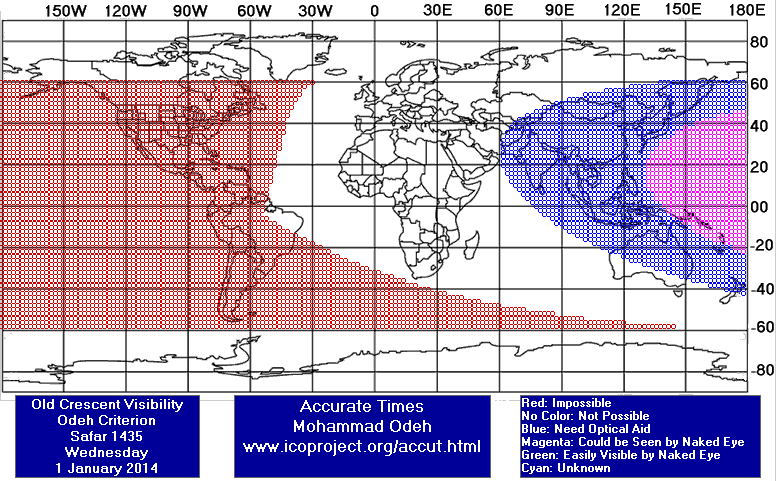 Tuesday 31 December 2013
Tuesday 31 December 2013

Safar Waning (OLD) Crescent Observation Results
Tue 31 December 2013
Bahrain
1 . Time of observation:
Before sunrise.
Seen: ICOP member Eng. Ali Majeed Al Hajari from مدينة عيسى City in الوسطى State mentioned that the sky was clear, the atmospheric condition was clear, the crescent was seen by naked eye, the crescent was seen by binocular, the crescent was seen by telescope, the crescent was not sought by CCD Imaging
Eng. Ali Majeed Al Hajari said: "كانت الرؤيا جدا سهلة لهلال اخر شهر صفر لهذا العام"
Germany
1 . Time of observation:
Before sunrise.
Seen: ICOP member Eng. Martin Elsaesser from Munich City in Bavaria State mentioned that the sky was clear, the atmospheric condition was superb, the crescent was seen by naked eye, the crescent was seen by binocular, the crescent was not sought by telescope, the crescent was not sought by CCD Imaging
Eng. Martin Elsaesser said: "The old crescent moon was observed from the bavarian / austrian alps, at 1430m near the Sudelfeld. The crescent was 29 hours before conjunction and was easily seen with the naked eye.
Only moderate amounts of snow and ice covered the south side of the local mountains, so that i could easily walk the 400m of height to the observation point. I was actually scouting for a good location to observe the morning crescent of 2014-01-01, which would be far more difficult.
I created a video of the crescent images i had taken:
http://www.youtube.com/watch?v=fjZdC7isjVI"
Indonesia
1 . Time of observation:
Before sunrise.
Not Seen: ICOP member Mr. AR Sugeng Riyadi from Surakarta City in Central Java State mentioned that the sky was totally cloudy, the atmospheric condition was superb, the crescent was not seen by naked eye, the crescent was not sought by binocular, the crescent was not sought by telescope, the crescent was not sought by CCD Imaging
Mr. AR Sugeng Riyadi said: "On Tuesday, Dec 31, 2013 the weather was rainy, the old crescent of shafar 1435 AH was not seen from Bendo Ketitang Juwiring Klaten Central Java Indonesia."
Iran
1 . Time of observation:
Before sunrise.
Seen: ICOP member Mr. Alireza Mehrani from Esfahan City in Esfahan State mentioned that the sky was clear, the atmospheric condition was clear, the crescent was seen by naked eye, the crescent was seen by binocular, the crescent was not sought by telescope, the crescent was not sought by CCD Imaging
2 . Time of observation:
Before sunrise.
Seen: ICOP member Eng. Ali Janghorbani from Shahreza City in Town sarvestan State mentioned that the sky was clear, the atmospheric condition was hazy, the crescent was seen by naked eye, the crescent was not sought by binocular, the crescent was not sought by telescope, the crescent was not sought by CCD Imaging
Nigeria
1 . Time of observation:
Before sunrise.
Not Seen: ICOP member Dr. Sani Mustapha from kaduna City in kaduna State mentioned that the sky was clear, the atmospheric condition was hazy, the crescent was not seen by naked eye, the crescent was not sought by binocular, the crescent was not sought by telescope, the crescent was not sought by CCD Imaging
Wed 01 January 2014
Indonesia
1 . Time of observation:
Before sunrise.
Not Seen: ICOP member Mr. AR Sugeng Riyadi from Surakarta City in Central Java State mentioned that the sky was partly cloudy, the atmospheric condition was hazy, the crescent was not seen by naked eye, the crescent was not sought by binocular, the crescent was not sought by telescope, the crescent was not sought by CCD Imaging
Mr. AR Sugeng Riyadi said: "I tried to see the old crescent of Shafar 1435 AH on Wednesday, January 1, 2014 from my village at Bendo Ketitang Juwiring Klaten Central Java Indonesia; but it was NOT SEEN because the east sky was totally cloudy."
Kuwait
1 . Time of observation:
Before sunrise.
Not Seen: ICOP member Mr. Mohammad Al-Harbi from العبدلي City in الجهراء State mentioned that the sky was partly cloudy, the atmospheric condition was clear, the crescent was not seen by naked eye, the crescent was not seen by binocular, the crescent was not sought by telescope, the crescent was not sought by CCD Imaging
Nigeria
1 . Time of observation:
Before sunrise.
Not Seen: ICOP member Dr. Sani Mustapha from kaduna City in kaduna State mentioned that the sky was clear, the atmospheric condition was hazy, the crescent was not seen by naked eye, the crescent was not sought by binocular, the crescent was not sought by telescope, the crescent was not sought by CCD Imaging




